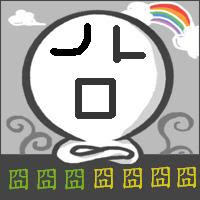<Grid x:Name="LayoutRoot" Width="450" Height="450" >
<Canvas Background="Red" x:Name="canvasTop"
MouseLeftButtonDown="getMousePosition" MouseMove="mouseMove" MouseLeave="unmouseDown" MouseLeftButtonUp="unmouseDown">
<Ellipse x:Name="MyAnimatedRectangle" Stroke="Black" StrokeThickness="1"
Width="50" Height="50" >
<Ellipse.Projection>
<PlaneProjection x:Name="pProject" RotationX="0" RotationY="0"/>
</Ellipse.Projection>
<Ellipse.RenderTransform>
<TranslateTransform X="200" Y="200"/>
</Ellipse.RenderTransform>
<Ellipse.Fill>
<LinearGradientBrush EndPoint="0.2,1" StartPoint="0.5,0">
<GradientStop Color="Black" Offset="0"/>
<GradientStop Color="#FFEEC5C5" Offset="1"/>
</LinearGradientBrush>
</Ellipse.Fill>
</Ellipse>
</Canvas>
</Grid>
上述的xaml內容,在名為canvasTop的Canvas元件中有四個mouse事件,即「MouseLeftButtomDown」、「MouseLeftButtonUp」、「MouseMove」、「MouseLeave」。事件發生時觸發的function:
MouseLeftButtomDown → getMousePosition()
MouseLeftButtonUp、MouseLeave → unmouseDown()
MouseMove → mouseMove()
與其對應的 .cs檔,程式內容如下:
using System;
using System.Collections.Generic;
using System.Linq;
using System.Net;
using System.Windows;
using System.Windows.Controls;
using System.Windows.Documents;
using System.Windows.Input;
using System.Windows.Media;
using System.Windows.Media.Animation;
using System.Windows.Shapes;
namespace Rotation3D_OnMouse
{
public partial class MainPage : UserControl
{
bool onMouseDown = false;//if mouse click on canvas
Point currentPosition;
Point nextPosition;
public MainPage()
{
InitializeComponent();
}
private void getMousePosition(object sender, MouseButtonEventArgs e)
{
onMouseDown = true;
currentPosition = e.GetPosition(canvasTop);
}
private void mouseMove(object sender, MouseEventArgs e)
{
if (!onMouseDown) return;
nextPosition = e.GetPosition(canvasTop);
PlaneProjection pp = MyAnimatedRectangle.Projection as PlaneProjection;
double tmpX = nextPosition.Y - currentPosition.Y;
double tmpY = nextPosition.X - currentPosition.X;
pp.RotationX = tmpX;
pp.RotationY = tmpY;
}
private void unmouseDown(object sender, MouseEventArgs e)
{
onMouseDown = false;
}
}
}
觸發MouseLeftButtonDown後做MouseMove的動作,可對Silverlight目標物件做RotationX、RotationZ的動作。

沒有留言:
張貼留言